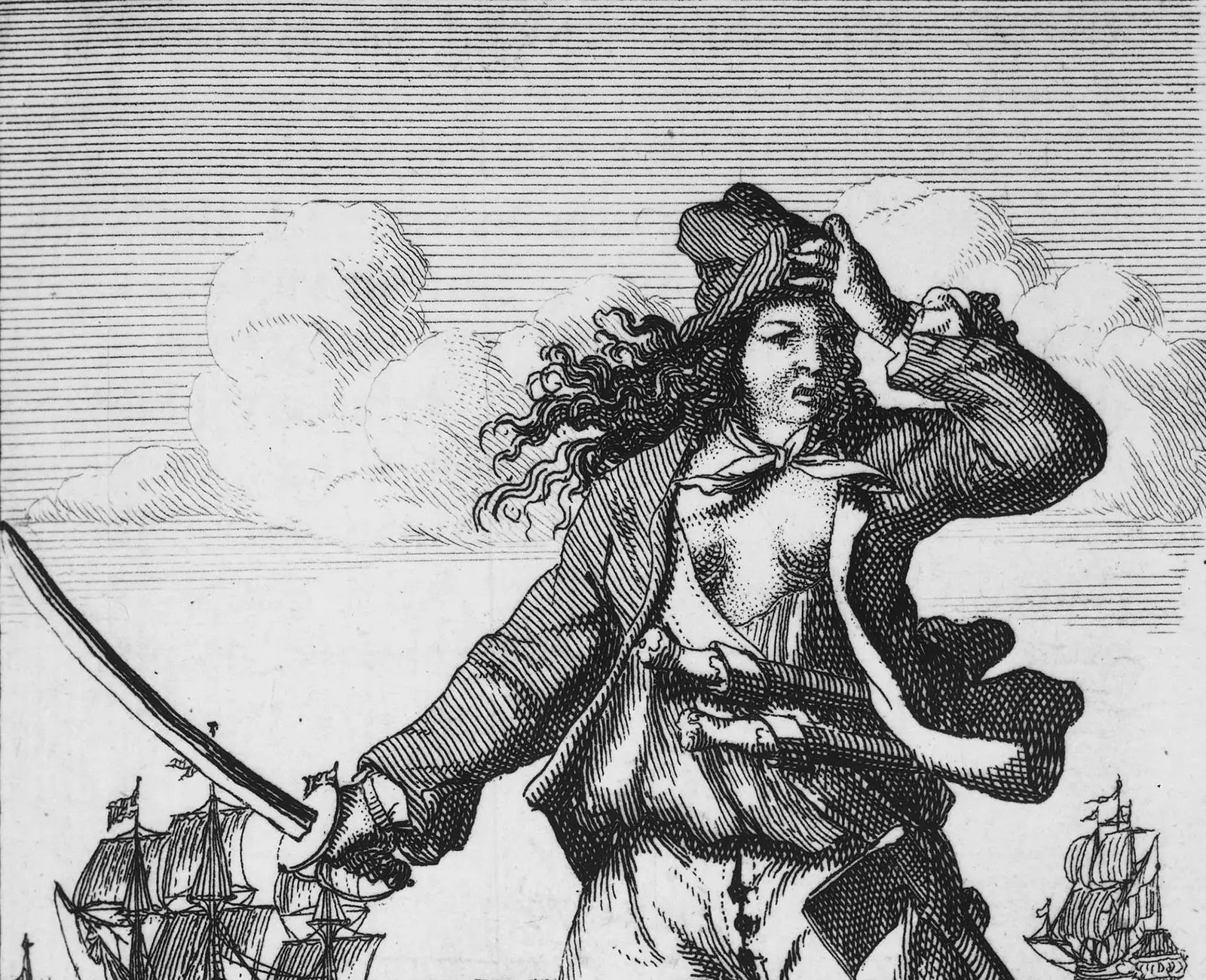
Reproduction of an image of Mary Read
In some cases the boundary between pirate woman and pirate woman is blurred. During the golden age of Corsican, between the seventeenth and eighteenth centuries , her activity was regulated by codes like the one she wrote Bartholomew Roberts.
In all its variations, one of the articles invariably followed this pattern: “No children or women are allowed on the ship. If a man were found seducing any of the opposite sex and carried her in disguise, he would suffer death."
For the pirate a woman on board meant bad luck and conflict. However, as Roberts's code reflects, the wasteland of masculinity often led sailors to pass off their lovers as mates.
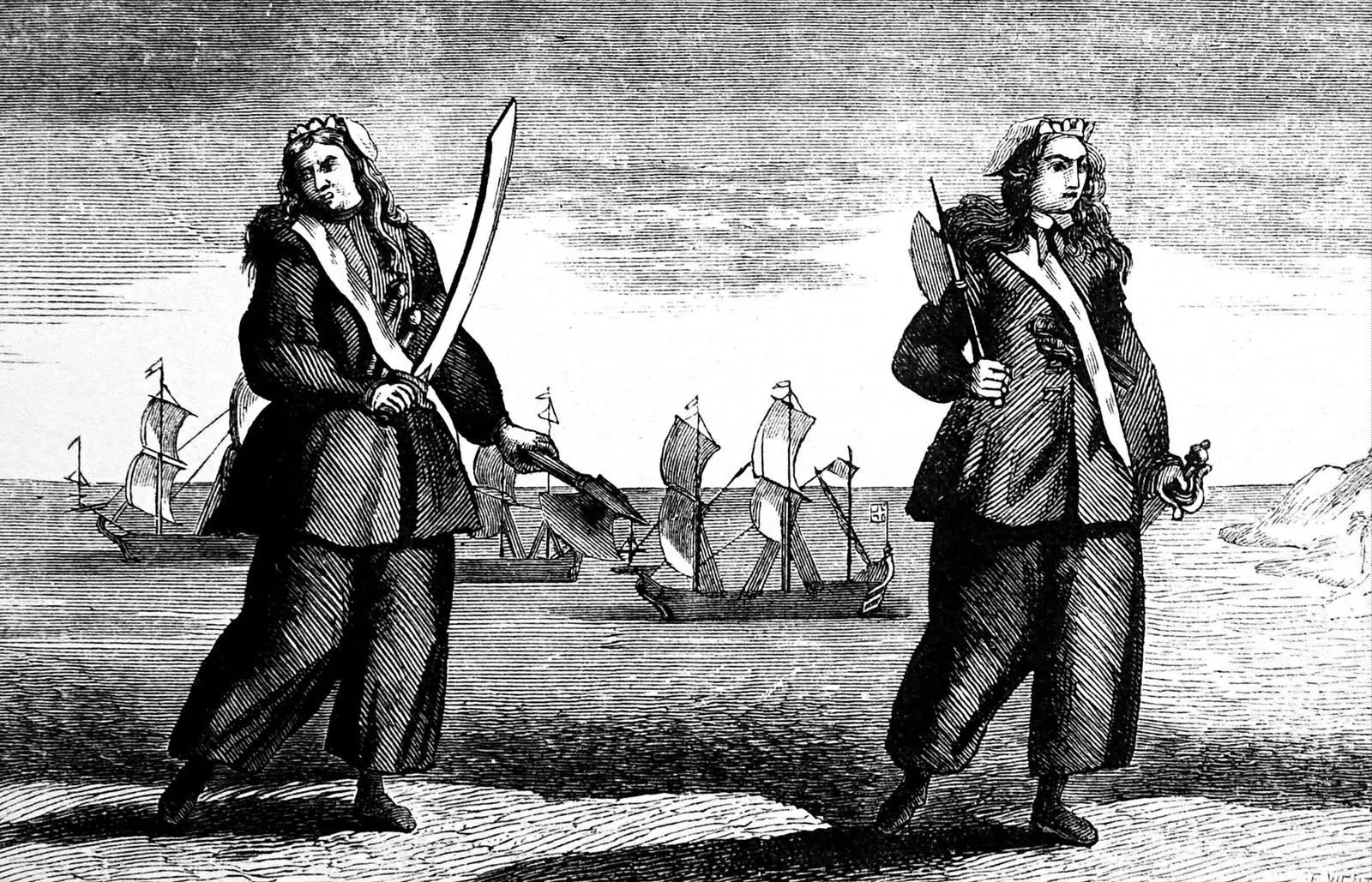
Anne Bonny and Mary Read
When the trap was discovered, the woman had to overcome the category of object to be accepted. The imposition of the captain was not enough. This could not break his own rules. The agreement had to be made tacitly between the crew.
And the only way to achieve that agreement was to be more of a man (more violent, more ruthless) than anyone around her. Something like the woman who today reaches a high position in a large company.
This principle is clearly expressed in the first written mention of the female pirate in the Gesta Danorum, a Danish chronicle from the 12th century: "To these sailors, who had the body of a woman, nature granted them the souls of men." Little more needs to be said.
ANNE DIEU-LE-VEUT
Chances are Anne 'God-Wills-it' She was deported from France on criminal charges to the island of Tortuga, in northern Haiti, around 1680. The French had given the place to the buccaneer Bertrand d'Ogeron as free port for the captains who raided English and Spanish colonies and ships.
Over there Anne married a privateer who, according to legend, was killed by another privateer, Laurens de Graaf. Enraged, Anne challenged him to a duel. When she had disarmed him, de Graff proposed to her. In another version, De Graff merely insulted her and she responded with the famous duel. In any case, she married him and joined his crew on an expedition in which they plundered the ports of Jamaica.
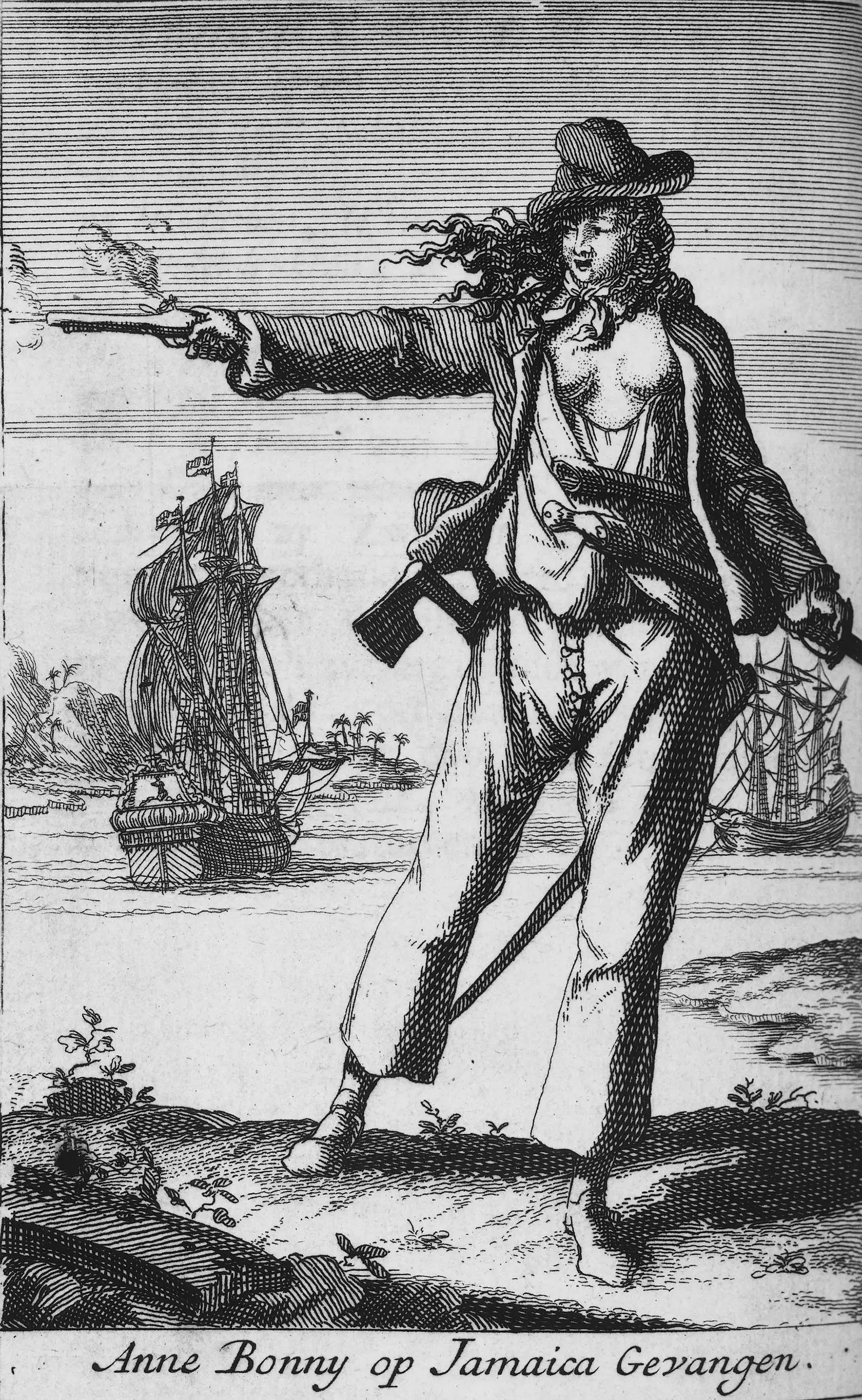
anne bonny
The British response was to attack Port-de-Paix, in front of Tortuga, where Anne was captured with her children. She was released after three years of captivity and was reunited with de Graff. At this point the testimonies about both are lost. It is probable that they took refuge in Louisiana, under the protection of the French colonial authorities.
ANNE BONNY AND MARY READ
Anne Bonny was born around 1700. She was an illegitimate child of an Irish barrister from County Cork and a servant of his wife. The lawyer escaped with his mistress to London citing professional reasons and there, to hide Anne, he dressed her in men's clothing and made her pass as her assistant. Her wife discovered the ruse and suspended the assignment she depended on. In search of new horizons, the new family crossed the Atlantic and she settled in the colony of Carolina, where she prospered.
Mary Read was also an illegitimate child. Her mother, a widow, had a son who died after the death of her husband. To maintain the pension that her in-laws sent him, he passed Mary off as her stepbrother. This she assumed her gender and, under the name of Mark, she enlisted in the English army to fight in the Nine Years' War.
Among the Dutch allies she met a soldier whom she married. She ran a tavern with him near Breda until he died suddenly. Mary did not hesitate to resume her masculine identity and embark for the West Indies. When her ship was raided by pirates en route, she joined the crew.
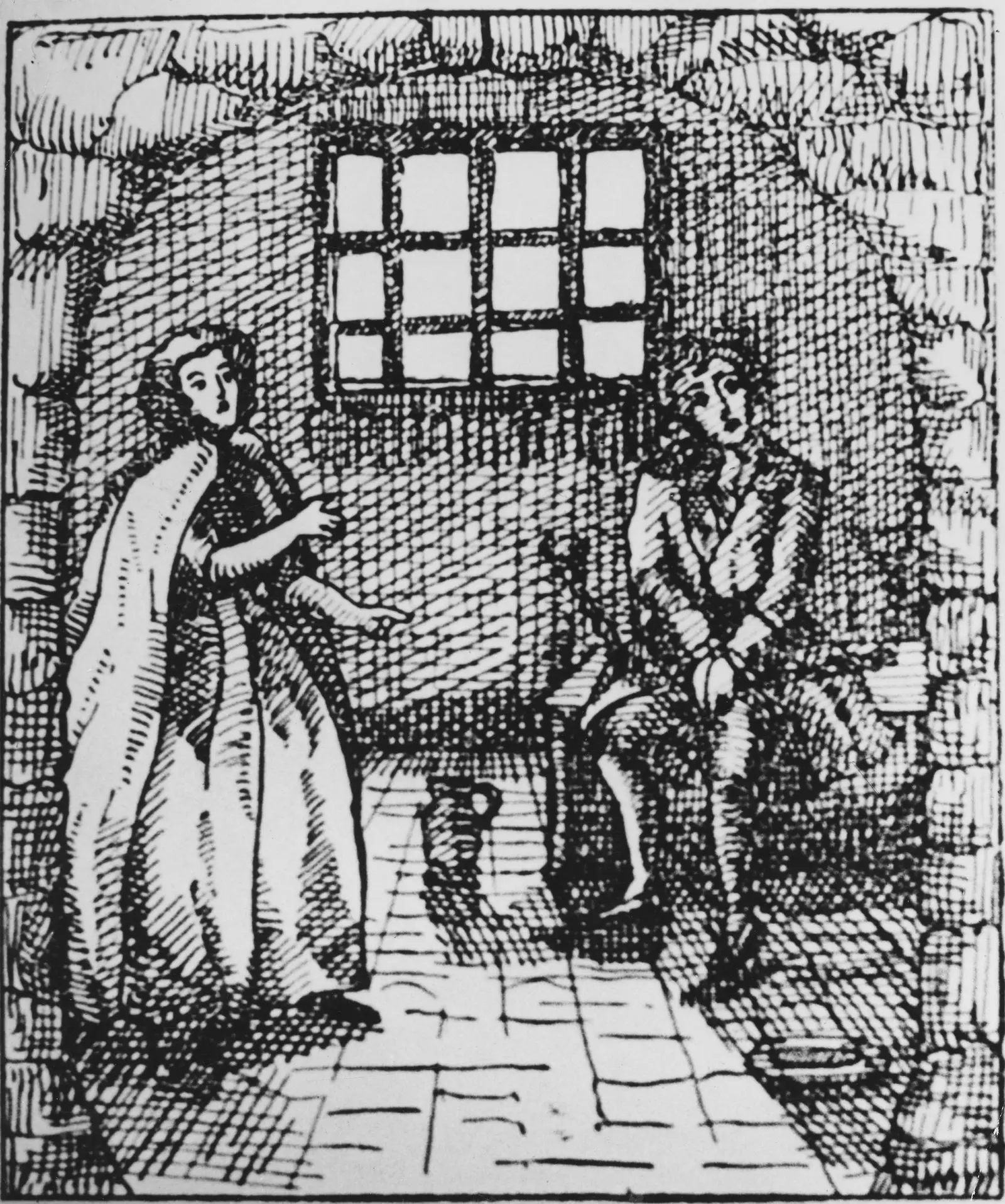
Mary Read visits Calico Jack in jail
Anne, for her part, had been disinherited and thrown out of the house because of her marriage to a small-time sailor: James Bonny. They settled in New Providence, in the Bahama Islands, the English equivalent of Tortuga. There James worked as an informer for the governor on privateer activity. Anne gravitated to her husband's target of espionage and escaped with John Rackham, Calico Jack. , who made her pass for a man.
It was then that Mary Read enlisted on Rackham's ship. I find her with Anne and the consequent anagnorisis (or revelation of her feminine condition) tends to the romantic. Supposedly, the secret remained between them and Rackham. According to one of their victims, both were wearing jackets, long pants and a scarf tied around their heads. There has been speculation about all kinds of combinations between them and the pirate.
The trio dedicated themselves to looting the Caribbean until his boat was captured one night when the sailors were so drunk that they did not resist. Following a summary trial in Jamaica, Rackham was executed at Gallows Point and his corpse exposed in a cage in Port Royal.
Mary and Anne's death sentence was postponed because they were pregnant. Mary died in prison. Anne survived, but trace of her is lost. She was able to be released. Some researchers defend that she returned to Carolina.
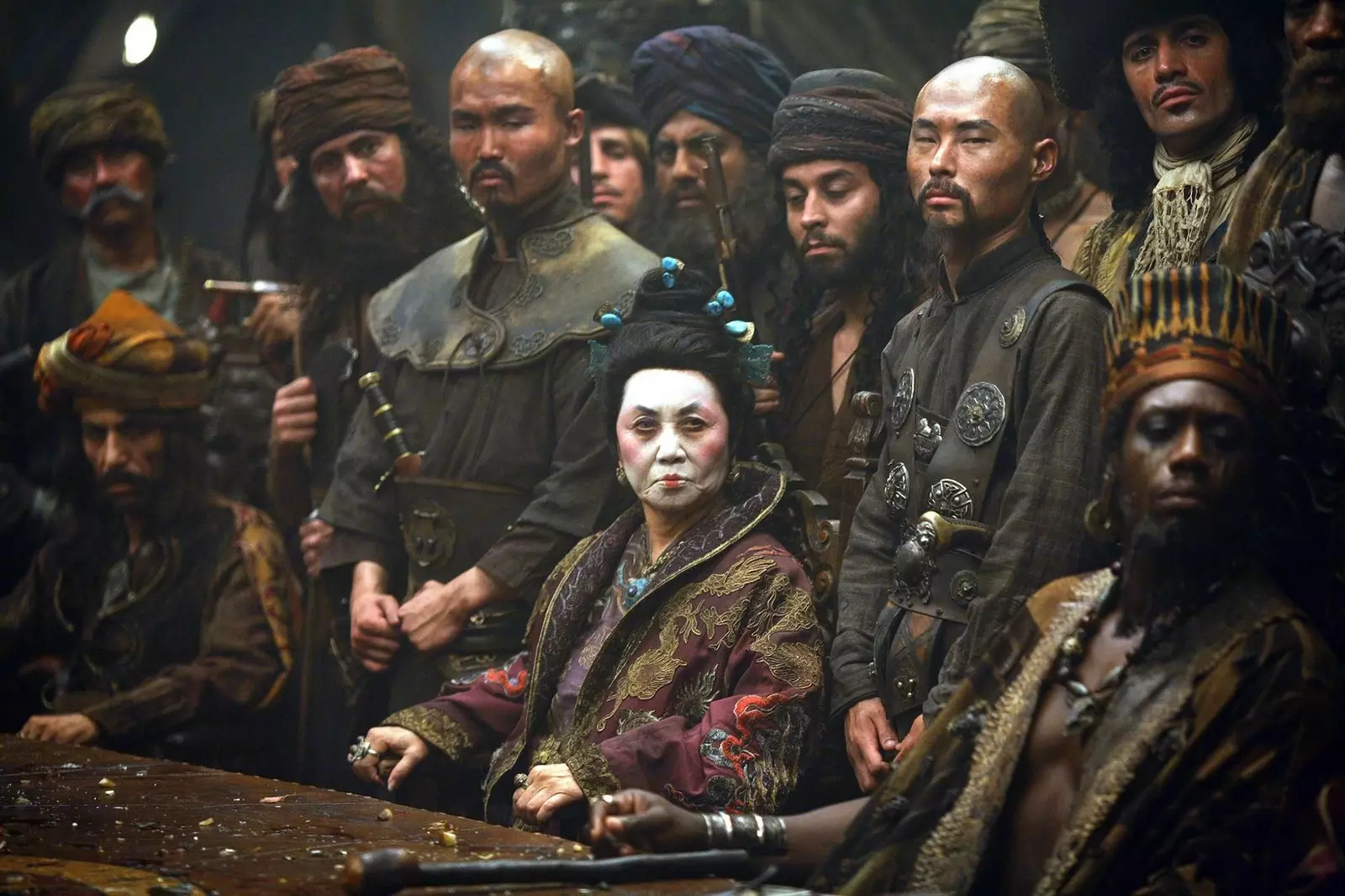
Character from one of the 'Pirates of the Caribbean' movies inspired by Ching Shih
ching shih
If pirate women had to choose a leader, it would be Ching Shih. She met corsair Cheng I in a small brothel in Guangzhou city and married him in 1801. Since her marriage, she took an active role in scaling a fleet that, through alliances, reached 1,800 ships and a force of 70,000 men; a navy in its own right in the South China Sea.
The confederation demanded tribute from coastal populations in exchange for protection. Resistance was punished with punitive expeditions that extended to large cities and colonial enclaves such as Macao. Portuguese and British ships, as well as those of the Qing Empire, were stripped of their goods and their sailors sold into slavery.
When Cheng I died, Shih took over with the support of the captains and she attracted the young protégé of her husband, who she made into her mistress and her second-in-command. She severely applied the code that regulated the distribution of booty and extended it with regulations that protected the captives. She punished the rape of imprisoned women with death. When the sailors wished to take one of them as a wife or concubine, she forced them to formalize it in a contract. In case of cohabitation, the man was beheaded and the woman thrown into the sea with a cannonball tied to her feet.
Ching Shih knew how to withdraw in time. A series of defeats against the Portuguese made him see the need for a negotiated solution. The confederacy was dissolved and she was allowed to keep a part of its fortune, with which she set up a gambling house in Guangzhou, her hometown.
